Fox have just dropped a new shock that fuses the muscles of the gravity focussed FLOAT X2 with the smart simplicity of the more XC focussed FLOAT X. Here is as essential guide and first ride impressions of the new FOX DPX2.
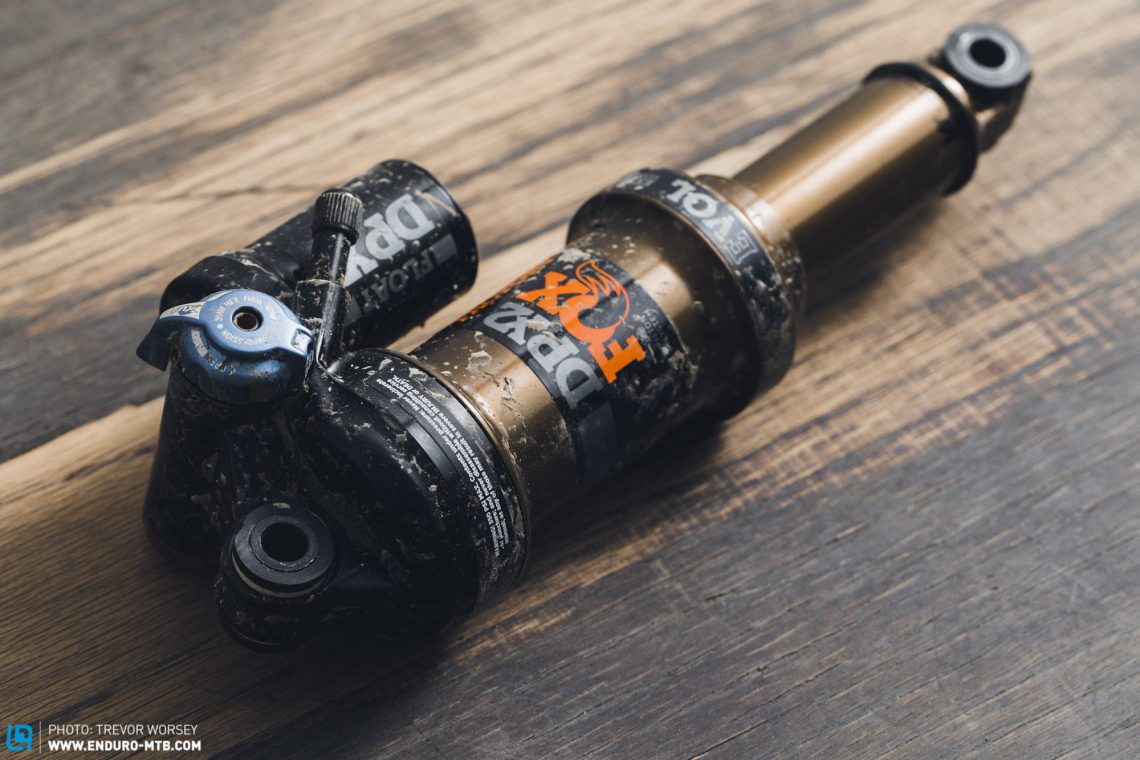
Looking at the current FOX line-up we have the legendary FLOAT X, targetted firmly at XC and trail riders, then the gravity focussed FLOAT X2 aimed at the enduro racer. What happens if you want the same DH performance of the FLOAT X2 but in a simpler package with a three position platform? Until now you were out of luck, but now the 424 g FOX FLOAT DPX2 aims to be the magic bullet for aggressive trail riders.

The essential guide to the new FOX DPX2
So, what’s changed with the new FOX DPX2? At this point we could delve into base valve design, decoupled compression circuits and reed valves (the same as used in FOX’s Ford Raptor shocks no less), but ain’t nobody got time for that! Most of you will be more interested in how the new design benefits the riding feel. In a nutshell, the new DPX2 combines the FLOAT X2’s low internal pressures and recirculating oil damper design for maximum small bump compliance and combines it with the FLOAT DPS Dual Piston Base Valve design which provides a separate lockout circuit so you can have a firm mode without compromising the shocks performance. Finally the EVOL air-can has been further reworked to give extra volume in the negative air spring. On the trail this means a more linear spring curve through the first 25% of travel, and more support the remaining travel, small bumps disappear and big hits do not blow the O-ring off the end of the shock, win-win. Ergonomically the FOX DPX2 has a lower profile reservoir to improve water bottle clearance, and features big and easy-to-access adjusters. Hallelujah! No more trying to adjust a rebound control dial hidden behind the linkage.

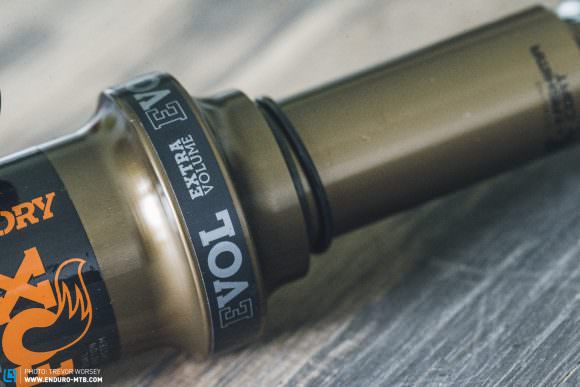
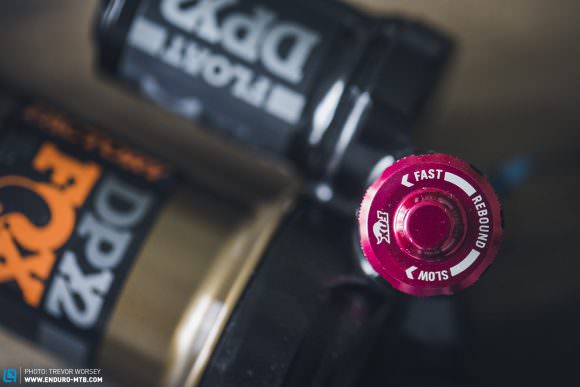
The EVOL air sleeve is now lighter and has been customised for each shock size to balance the internal forces. The maximised bushing overlap not only helps to reduce friction, but also stops the shock from binding when you get a little wild and start landing jumps sideways. The increased negative chamber gives a more linear spring curve, for increased small bump sensitivity, while allowing the user to easily customise the end stroke progression using volume reducers.
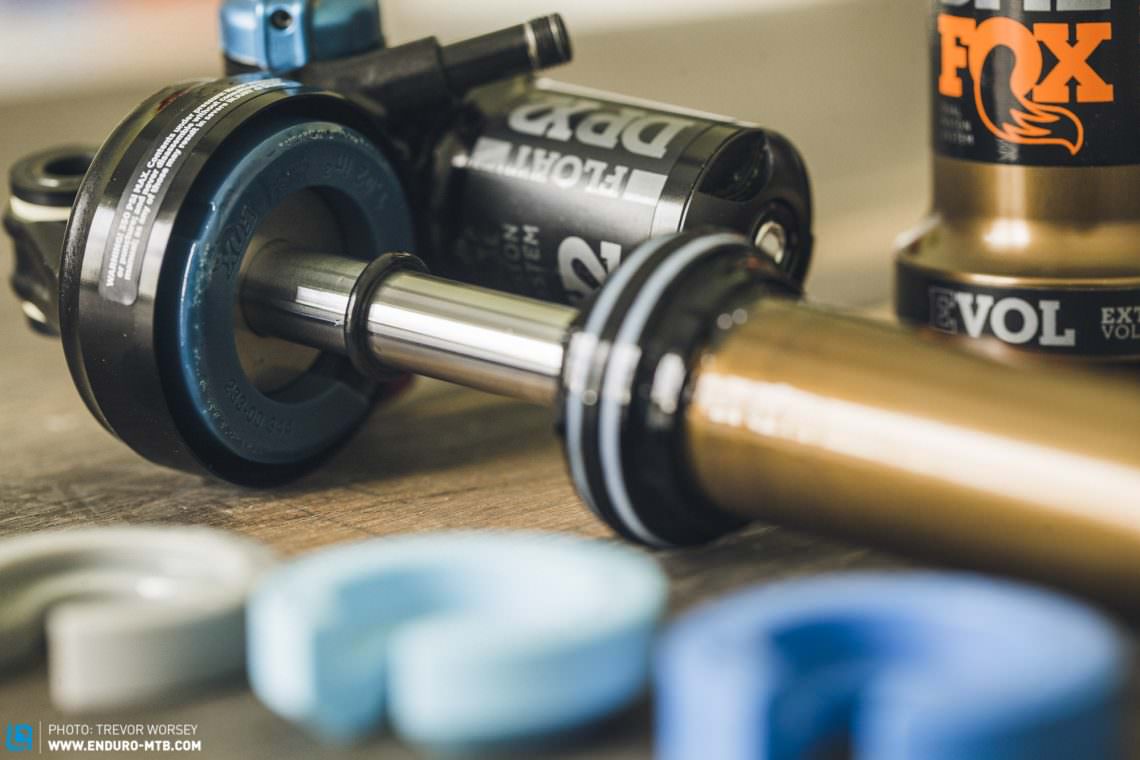
Initial testing with the FOX DPX2
We’ve been riding the new FOX DPX2 for the last four weeks to try and suss out FOX’s claims. Before we start, let’s be very clear, all the high-end shocks on the market offer such impressive damping, that correct setup and tune far outweigh the performance benefits offered by new technologies. As such, it’s always tough reviewing new shocks, it’s easy to wax lyrical about the smoothness and composure, but much of that is due to fresh oil and new seals, often replacing a shock that has had some hammer. That said there are a number of features we immediately liked about the FOX DPX2.

The first is the ergonomics, gone is the tiny, generally inaccessible rebound control of the FOX FLOAT X and the hex key controls of the FOX X2. We now have big rebound dial that is easy to access with great detents and a smooth action. The compression adjuster gives us three levels of compression, open – medium – firm, changed via a robust lever that is resistant to accidental adjustment. Each of the three levels of compression damping are clearly distinguishable and well chosen, with a very firm climb mode that retains just enough small bump sensitivity for brutal grip. Low speed compression can be adjusted with a 3 mm hex key to fine tune support. We like that the reservoir is smaller too, allowing more compatibility with water bottle fitment.
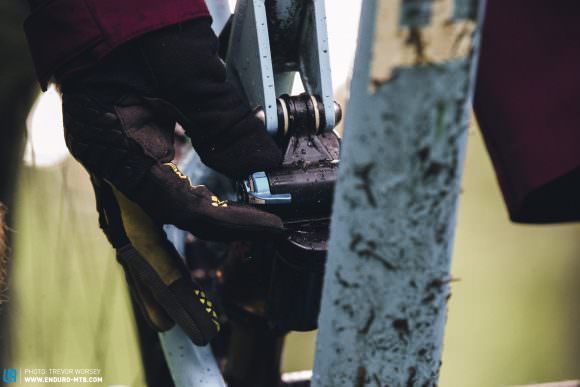


Riding aggressively on rocky trails the best way to describe the feel of the FOX DPX2 is that it is virtually indistinguishable from the FLOAT X2 – which is a very good thing indeed. Initial breakaway is very sensitive, there’s no stiction around the SAG point and the shock filters out trail buzz and chatter well. We worked through the volume spacers from 0.2 in3 to 1.02 in3, and as hoped, they resulted in very noticeable changes, covering the entire range from extremely linear, to brutally progressive. With a little optimisation every rider should find a setting that works for them.
Progressivity and mid-stroke support are dictated by not only the shock, but also the bikes suspension design. In our test Pole EVO LINK 140, we are running a standard factory tune (Compression Medium) with the rebound tuned to the leverage and our rider weight, with one 0.4 in3 volume adjuster to match the kinematics of the frame. Testing is still ongoing, but we have narrowed in a tune that excels on steep terrain, and hucks into rock gardens and poorly chosen lines are handled extremely well. The bike feels noticeably more planted at speed compared to a competitor’s shock and recovers faster between hard repeated hits.

The FOX DPX2 is shaping up to be a highly adjustable shock, offering FLOAT X2 like performance, but in a smaller and lighter package. With easier on-trail adjustment and a firm platform, if long-term reliability is on par with performance, then the FOX DPX2 will set a new standard for aggressive trail shocks.
For more Info head to: ridefox.com
Did you enjoy this article? If so, we would be stoked if you decide to support us with a monthly contribution. By becoming a supporter of ENDURO, you will help secure a sustainable future for high-quality mountain bike journalism. Click here to learn more.
Words & Photos:









